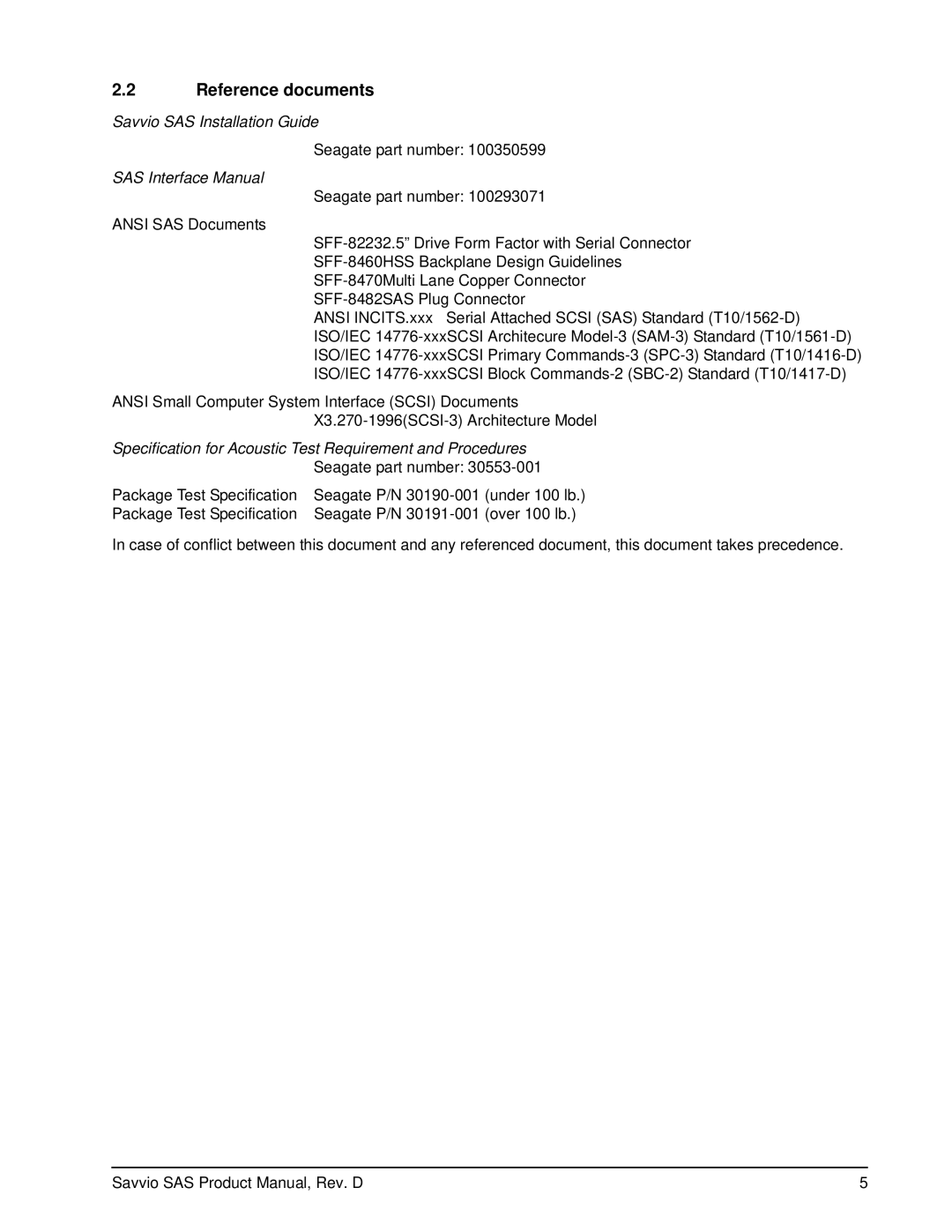ST936701SS, ST973401SS specifications
The Seagate ST936701SS and ST973401SS are high-performance enterprise hard drives designed for optimal data storage solutions in demanding environments. Both models belong to Seagate's Savvio series, which is renowned for its reliability and efficiency. These drives are tailored for critical applications such as database management, data warehousing, and online transaction processing.The ST936701SS comes with a storage capacity of 36.4 GB, while the ST973401SS offers a larger capacity of 73.4 GB. This variance allows users to choose the drive that best suits their storage needs without compromising performance. Both drives utilize a 2.5-inch form factor, making them compact and suitable for high-density storage configurations.
A key feature of these drives is their impressive rotational speed of 10,000 RPM, which enhances data access times and improves overall system responsiveness. This speed allows for reduced latency and faster data transfer rates, critical for applications that require quick retrieval of large datasets.
In terms of technology, these drives utilize the Serial Attached SCSI (SAS) interface, which is favored in enterprise settings for its reliability and speed. SAS provides better performance than traditional SATA drives, particularly when dealing with high workloads, as it supports multiple concurrent connections and higher data throughput.
The ST936701SS and ST973401SS are also equipped with advanced features such as Seagate's Native Command Queuing (NCQ), which optimizes the order in which read and write commands are executed. This results in improved performance under multi-tasking conditions, essential for enterprise servers managing multiple requests simultaneously.
Additionally, both drives incorporate features aimed at enhancing data integrity and reliability. They support End-to-End Data Protection and are designed to endure the rigors of continuous operation, with MTBF (Mean Time Between Failures) ratings that bolster their reputation for durability.
Energy efficiency is another notable characteristic, as both drives are designed to reduce power consumption without sacrificing performance. This is particularly important in enterprise environments where power management contributes to lower operational costs.
In conclusion, the Seagate ST936701SS and ST973401SS drives are robust, reliable storage solutions tailored for enterprise applications. With their high performance, advanced technology features, and capacity options, they provide organizations with the scalability and efficiency required in today’s data-driven landscape. Whether it's for critical data management tasks or high-access applications, these drives stand out as a solid choice for any enterprise storage strategy.
